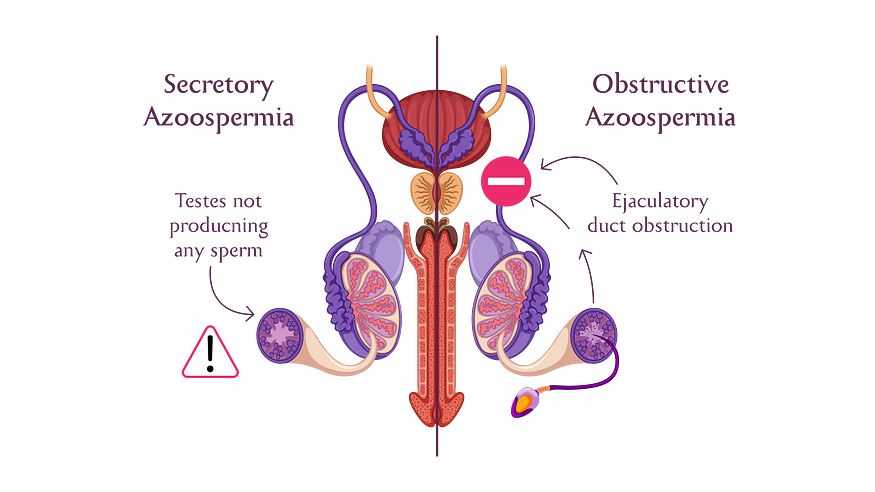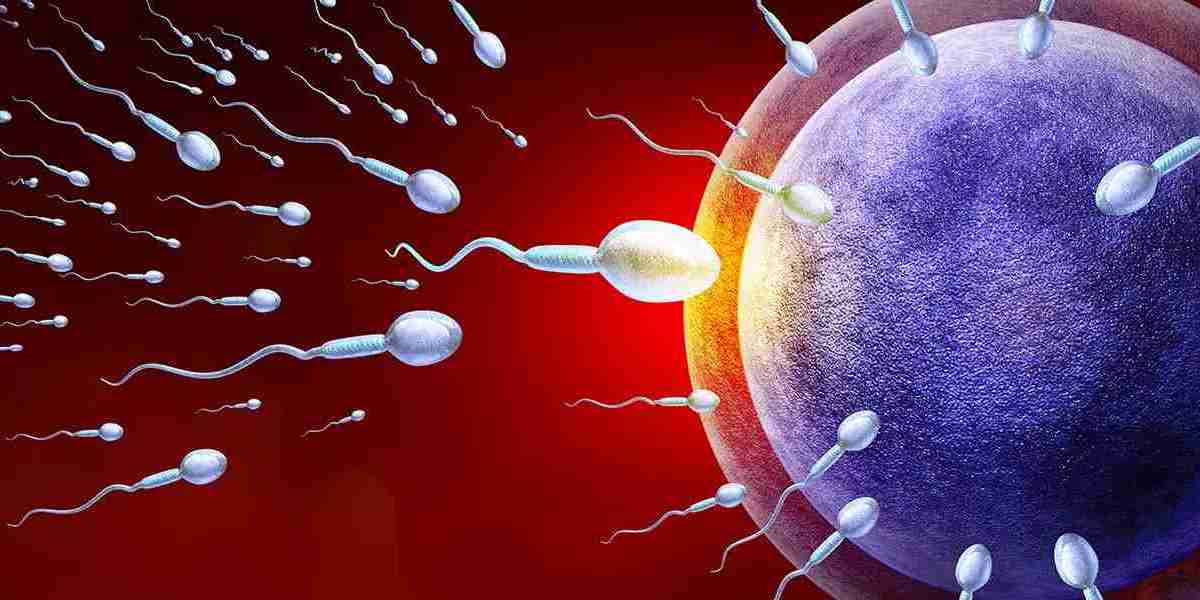Dear men, when was the last time you thought of checking on your sperm count? Bowled over by this question? We’re sure you are. That’s because men often don’t get reminders, albeit unsolicited, about their ticking bio clock like women do. The result — most men may remain ignorant about their sperm health. And If you are planning for a family, it’s even more important for you to track your sperm health.
So, let’s discuss why you should track your sperm count and how it makes a difference to your lives. Vroom in…
What Is a Normal Sperm Count?
Sperm count refers to the total sperm number present in the semen sample. As per WHO standards, a normal sperm count may range between 39 million to 701 million per ejaculate. At any given time, a man’s sperm count in his semen ejaculated is determined by two key elements :
- Sertoli cells in the testes (responsible for testes formation and sperm development)
- Abstinence period (time since last ejaculation)
A sperm count below 15 million is considered low and is called oligospermia. It is a key indicator of male fertility and reproductive health.
Sperm — Basics And Characteristics

Sperms are produced in small structures called the seminiferous tubules within each testicle. The two oval-shaped testicles of a man who has reached sexual maturity produce and store millions of microscopic sperm cells. Each sperm is incredibly tiny, measuring only 1/600 of an inch (0.05 millimeters long). During birth, the seminiferous tubules contain simple spherical cells. Testosterone and other hormones induce these cells to change into sperm cells throughout adolescence. The cells tend to divide and alter themselves until a head and a short tail emerge.
The DNA in the head of the sperm is what creates a new individual when it fuses with the DNA in the egg. The tip of the sperm head called the acrosome allows the sperm to penetrate. The mitochondria in the midpiece provide the energy required for the tail to move. The tail makes whip-like movements back and forth to drive the sperm towards the egg.
Why Does Sperm Count Matter?
Sperm count is one of the main factors responsible for male fertility and impacts an individual’s chances of fertilising an egg. Healthy sperm increase the chances of natural conception, while a low sperm count reduces them.
A semen analysis can help detect fertility issues early and guide treatments to boost men’s reproductive health.
Understanding Your Semen Analysis
A semen analysis is a test that checks a man’s sperm health by assessing important factors like:
- Sperm Count: How many sperm are present in one milliliter of semen.
- Motility: The percentage of sperm that move properly and effectively.
- Morphology: The proportion of sperm with a normal shape and structure.
- Volume: The amount of semen released during ejaculation.
These factors together help evaluate the chances of conception and guide fertility treatments if needed.
Semen Analysis Results Table
The following are considered normal semen analysis results based on the guidelines provided by the World Health Organization (WHO). Since semen quality can vary among individuals, the results are shown as a range.
Parameter
Normal Range
Total Sperm Count
39–928 million (per ejaculate)
Ejaculate Volume
1.5–7.6 mL
Sperm Concentration
15–259 million per mL
Total Motility
40–81% (progressive + non-progressive)
Progressive Motility
32–75%
Sperm Morphology
4–48% (normal shape and size)
These ranges represent healthy sperm parameters and help assess male fertility. If results fall outside these values, it may indicate an issue that requires further evaluation or treatment.
Factors Affecting Sperm Count
Decrease in sperm count is typically coupled with lower sperm quality, such as less motility or aberrant shape, which adds to the unfavorable impact. Problems with sperm count may be linked to :
- Body Mass Index (BMI)
- Seminal Infection
- Age
- Genital Operations
- Deficiencies in certain nutrients
- Medical conditions
- Testosterone levels
- Adverse lifestyle factors
Variation In Sperm Count :
1. Low Sperm Count
Low sperm count means that the sperm number in the ejaculate is fewer than normal. It may be more difficult to conceive naturally if one has low sperm count. Despite this, many men with low sperm counts can nonetheless father a kid. Low sperm count can be due to several hidden defects such as :
- Inherited chromosomal abnormality: Inherited medical disorder caused due to abnormality in the DNA
- Hormonal imbalance: When there is too much or too little of a hormone in the bloodstream.
- Varicocele: A medical condition characterized by dilated testicular veins
- Conditions that blocks the passage of sperm: This can be caused due to any infection or defects of tubules that transport sperm
2. High Sperm Count
Even while only one sperm is required to fertilize an egg, the journey there can be challenging. In short, more the sperms, better are the chances.
Sperm Count And Fertility
- Understanding Azoospermia
Fact: Azoospermia is characterized by the complete lack of sperms. About 3%- 10% of male infertility cases are caused due to azoospermia. Natural pregnancy cannot be possible in the case of azoospermia due to the absence of sperm. There are two types of azoospermia, depending on the cause:
- Secretory or Non-Obstructive Azoospermia (When the testis is incapable of producing sperm)
- Obstructive Azoospermia (Due to ejaculatory duct obstruction, sperms are produced but cannot be released with the ejaculate).

Implication: To begin treatment, it is necessary to determine the type of azoospermia. Furthermore, it should be mentioned that some cases of azoospermia have no cure and, therefore, no sperm can be obtained. Generally, azoospermia is treated with a variety of natural, hormonal and surgical methods (depending on the cause). Recent advancements in Assisted Reproductive Technology (ART) are allowing a growing number of patients to have options. M-TESE followed by ICSI would be the preferred technique in case of ART option. Azoospermia may also have a genetic linkage wherein certain genes may be responsible for the occurence of the condition. Take up InferGenes test, an at-home genetic test that helps analyze the genetic root cause of the condition.
Ways To Improve Your Sperm Health
1. Avoid Smoking
Smoking has a significant negative impact on sperm health. Studies show that semen parameters, including sperm count, motility, and morphology, are lower in smokers compared to nonsmokers. Smoking introduces harmful toxins into the body, which can lead to oxidative stress, damaging sperm DNA and reducing fertility. Quitting smoking can improve sperm function and overall reproductive health.
2. Reduce Alcohol Consumption And Drug Use
Excessive consumption of alcohol and certain drugs (such as steroids and marijuana) has been shown to negatively impact sperm health. Alcohol can lower testosterone levels, reduce sperm count, and lead to abnormally shaped sperm. Drugs like anabolic steroids and marijuana can decrease sperm motility, affect sperm morphology, and lead to lower sperm production. Reducing or eliminating alcohol and drug use can significantly improve sperm quality and motility.
3. Maintain Healthy Weight
Obesity and being overweight are strongly linked to reduced sperm production. Men who are overweight often have higher levels of estrogen and lower levels of testosterone, which can negatively affect sperm quality. A healthy weight, achieved through a balanced diet and regular exercise, helps maintain optimal hormone levels, supporting better sperm production. Maintaining a healthy weight can increase fertility and improve the chances of conception.
4. Practice Safe Sex
Sexually transmitted infections (STIs) are a leading cause of infertility in men, as they can damage the reproductive organs and affect sperm production. STIs like chlamydia and gonorrhea can cause scarring in the reproductive tract, leading to reduced fertility. Practicing safe sex by using condoms and getting regular STI screenings can protect your fertility and increase your chances of conception in the future.
5. Reduce Heat Exposure
Prolonged exposure to high heat can negatively affect sperm production. Men who frequently use hot tubs, saunas, or keep laptops on their laps may experience decreased sperm count and motility due to elevated testicular temperature. The testes are highly sensitive to heat, and overheating can impair sperm development. Reducing exposure to excessive heat and taking steps to cool down the body may improve sperm production and overall fertility.
6. Avoid Commercial Lubricants
Certain commercial lubricants used during intercourse can harm sperm health. Many lubricants contain chemicals that can decrease sperm motility and hinder their ability to survive in the reproductive tract. Some lubricants alter the pH balance of the vagina, which can be harmful to sperm. It’s advisable to use fertility-friendly lubricants, or better yet, avoid lubricants altogether when trying to conceive.
7. Choose The Right Clothing
The type of clothing men wear can influence sperm quality. Tight-fitting clothes, especially underwear like briefs, can increase the temperature around the testicles, leading to lower sperm production. Studies have shown that men who wear loose-fitting clothes or boxers have better sperm quality compared to those who wear tight clothing. Choosing the right clothing can help maintain optimal temperature conditions for sperm production.
8. Manage Your Stress
Chronic stress has been shown to affect fertility by disrupting hormone levels and negatively impacting sperm production. High levels of cortisol, the stress hormone, can decrease testosterone levels and sperm count. Engaging in stress-reducing activities like meditation, yoga, music therapy, and regular physical exercise can significantly reduce stress levels. These practices can help improve hormonal balance and sperm quality, supporting better reproductive health.
9. Get Enough Vitamin C & D:
Studies reveal that vitamin C supplementation helped improve the sperm count, morphology, & motility among men who were infertile. Similarly, vitamin D supplementation was also found to have a positive impact on fertility potential among men.
How Can You Check Sperm Count?
You can get a semen analysis done. Semen analysis evaluates the characteristics of a male’s semen and the sperm contained therein.
As a result of social stigma in some parts of the world, many men refrain from getting their semen tested. While in-clinic semen analysis was the only choice previously, there is now an at-home option that delivers concrete data.
Sperms are produced in small structures called the seminiferous tubules within each testicle. The two oval-shaped testicles of a man who has reached sexual maturity produce and store millions of microscopic sperm cells. Each sperm is incredibly tiny, measuring only 1/600 of an inch (0.05 millimeters long). During birth, the seminiferous tubules contain simple spherical cells. Testosterone and other hormones induce these cells to change into sperm cells throughout adolescence. The cells tend to divide and alter themselves until a head and a short tail emerge.
The DNA in the head of the sperm is what creates a new individual when it fuses with the DNA in the egg. The tip of the sperm head called the acrosome allows the sperm to penetrate. The mitochondria in the midpiece provide the energy required for the tail to move. The tail makes whip-like movements back and forth to drive the sperm towards the egg.
Frequently Asked Questions
1. How can I increase my sperm count fast?
To increase your sperm count, it is important to follow a healthy lifestyle, quit smoking & alcohol, avoid stress, and consume foods rich in vitamin C, D, and other nutrients.
2. Which foods increase sperm the most?
Foods rich in vitamin C & D help improve sperm count. Also, a study revealed that consuming walnuts regularly has a positive impact on sperm health parameters.
3. Which fruit is best for sperm?
Studies suggest that vitamin c supplementation helps improve sperm parameters. Thus, fruits rich in vitamin c like lemons, grapefruits, oranges, etc. can be beneficial for sperm health.
Article Source :
This article was originally published on
https://www.lifecell.in/blog/health-check/sperm-count-basics-and-overview









